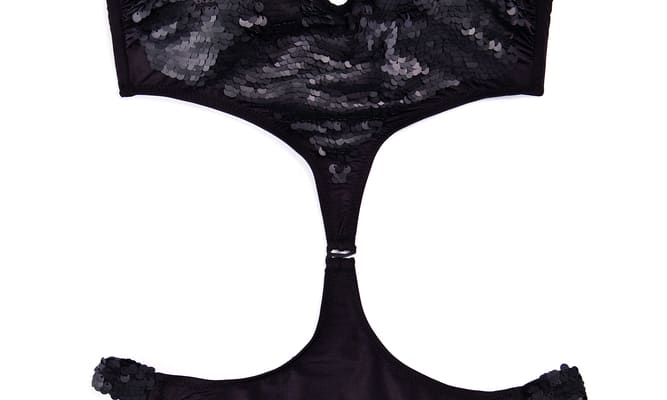2025 Women's Intimates in the United Kingdom: A Guide to Luxury, Period‑Proof, Leak‑Proof and Shapewear
Did you know that in the United Kingdom for 2025, luxury finishes and functional period‑proof underwear have moved into the mainstream? This guide outlines the factors shaping the intimates market today — from comfort‑led luxury and leak‑proof technologies to broader sizing, eco‑friendly fabrics and practical care — so you can compare features and make informed decisions.

Luxury and comfort are now one product category
By 2025 many UK consumers prefer intimates that marry premium materials and refined design with everyday comfort and durability. The industry has shifted away from lingerie reserved for “special occasions” toward pieces that look upscale (lace trims, elegant cuts, refined silhouettes) while using soft, long‑wear fabrics and seamless construction methods.
What to look for:
- Soft knit fabrics, modal and recycled fibres that are gentle on the skin.
- Seamless or bonded edges to reduce visible lines beneath clothing.
- Supportive shapes (wide bands, shaped cups) prioritising fit and comfort over aggressive shaping.
- Construction features that extend product life (reinforced stitching, quality trims).
This reflects shoppers’ interest in investment garments that function daily yet still feel special.
Period‑proof and leak‑proof underwear have become mainstream
Reusable period underwear is now widely accepted across the United Kingdom as an alternative or complement to single‑use pads and tampons. Contemporary period pants typically include an absorbent gusset, moisture‑wicking layers, antimicrobial finishes and odour control, and most are machine washable.
Key functional features:
- Layered gusset design (absorbent core + moisture barrier).
- Quick‑dry outer layers and breathable topsheets to maintain comfort.
- Odour‑reducing and antimicrobial treatments.
- Machine washability and clear care instructions to preserve absorbency.
Styles now range from bikinis and briefs to thongs, high‑waist options and swimwear, providing choices for different outfits and activities.
Understanding absorbency metrics and use cases
Absorbency ratings, often expressed in millilitres (ml) or tampon equivalents, are a helpful way to compare period underwear. These figures assist in matching a product to your flow and intended wear (day, night, exercise, swim).
Common absorbency examples reported in 2025 testing:
- Light / spotting: around 15–20 ml (roughly 1–3 tampon equivalents) — suitable for spotting, the end of a cycle or as backup.
- Medium: around 18–20 ml (about 2–3 tampons) — for day use and moderate flow.
- Heavy: around 40–50 ml (up to 5–10 tampon equivalents) — for overnight, postpartum or heavy days.
- Very high/super absorbency: up to 50 ml or more for extended wear or overnight protection.
Practical notes:
- Absorbency figures are indicative but can vary with body position, movement and individual flow. Trying a few absorbency levels helps identify what works best.
- On heavy days or for longer durations, many people combine period pants with another product (cup, pad) until they’re confident in the fit and performance.
Active and swim‑friendly leak‑proof options
Technical period underwear now includes sport and swim variants made for exercise and water. These pieces commonly offer:
- Chlorine‑resistant finishes for swimwear and quick‑dry fabrics.
- Seamless, low‑bulk liners to sit comfortably with workout clothing.
- Antimicrobial and odour‑control tech suited to high‑movement activities.
If you plan to use period‑proof items for sport or swimming, review product specs for “sports” or “swim” use, advertised chlorine resistance, and recommended absorbency for dynamic conditions.
Inclusivity: wider sizes and teen lines
The 2025 UK intimates market shows a continued move toward larger size ranges and youth‑focused lines. Many brands now provide extended sizes and teen fits that consider differences in body shape and developmental needs.
What this means for shoppers:
- Check for explicit size charts and teen/tween categories to ensure appropriate fit and coverage.
- Brands increasingly publish measurements and guidance for choosing the right size, rather than relying on generic labels.
- Teen lines generally favour softer elastic, higher waistbands for school uniforms and simplified absorbency options for confidence.
Sustainability and textile innovation
Transparent sourcing and sustainable materials are central to product development in 2025. Frequently used sustainable fibres and technologies include:
- Recycled nylon and polyester, organic cotton, bamboo viscose and modal blends.
- New premium nylons and performance fibres created with lower environmental impact (industry coverage has reported innovations from established textile mills).
- Sustainability expos and fabric showcases remain key venues for sourcing eco‑certified materials and verifying supplier claims.
Advice when prioritising sustainability:
- Review product material lists and any third‑party certifications where provided.
- Look for clear information about recycled content percentages and follow care instructions that support longevity (longer usable life reduces overall footprint).
Shapewear: comfort‑first smoothing
Shapewear in 2025 tends to favour gentle smoothing and comfort rather than intense compression. Typical features:
- Breathable, elastic fabrics that give subtle shaping without restricting movement.
- Seamless bodysuits and high‑waist briefs suitable for wearing under varied garments.
- Emphasis on fabric breathability to avoid overheating and on accurate sizing for comfort.
Fit tips:
- Choose the size recommended by the brand’s guide rather than sizing down for extra “control.”
- Consider the outfit you’ll wear when selecting shapewear style (e.g., bodysuit for dresses, briefs for trousers).
Practical buying and care checklist for 2025 shoppers in the United Kingdom
Use this checklist to compare products and set realistic expectations:
- Match absorbency (ml / tampon‑equivalent) to your flow and intended wear (day/night/gym/swim).
- Confirm size ranges and whether teen‑specific styles are available if relevant.
- Prefer eco fabrics if sustainability matters and check for material transparency.
- Verify machine‑washable care, recommended temperatures and avoid fabric softeners that can reduce performance.
- For active or swim use, check claims for quick‑dry and chlorine resistance.
- Read independent tests and user reviews to assess real‑world performance over time.
Where industry trends and new materials are showcased
For people tracking innovation or sourcing materials, 2025 UK events and industry media remain important:
- Sustainability and fabric expos in London that highlight recycled and performance textiles.
- Lingerie and fashion trade shows where mills and designers present new constructions and finishes.
- Industry publications and testing outlets that publish independent reviews and absorbency test results.
Final practical considerations
- Absorbency and comfort differ by body and activity; allow time and experimentation when moving from disposables.
- Correct care extends lifespan — follow wash guidance and replace items if absorbency noticeably falls.
- Assess inclusivity and fit using published size guides and favour brands that provide transparent testing and performance information.
Sources of independent reviews and fabric innovation reporting can assist you in comparing claims and choosing items that match your priorities for style, function and sustainability in 2025.
Disclaimer: product specifications, absorbency claims, availability and features may vary by manufacturer, retailer and season. Verify current product details with retailers or manufacturers before purchasing.
Sources
- Glamour — Best Period Pants: independent testing and buyer guidance (2025)https://www.glamourmagazine.co.uk/gallery/best-period-pants
- Underlines Magazine — industry coverage of fabrics, expos and trade shows (2025)https://underlinesmagazine.com/




